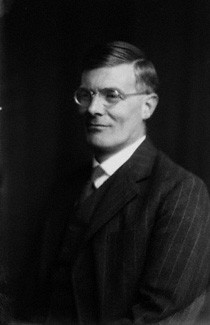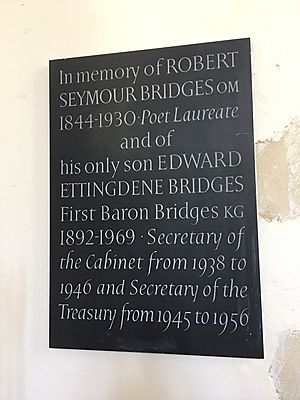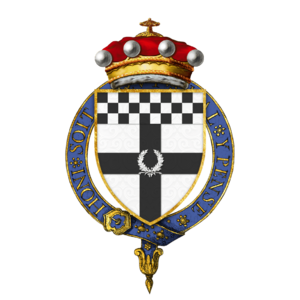Edward Bridges, 1st Baron Bridges facts for kids
Quick facts for kids
The Lord Bridges
|
|
|---|---|
 |
|
| Cabinet Secretary | |
| In office 1938–1946 |
|
| Preceded by | Sir Maurice Hankey |
| Succeeded by | Sir Norman Brook |
| Head of the Home Civil Service | |
| In office 1945–1956 |
|
| Preceded by | Sir Horace Wilson |
| Succeeded by | Sir Norman Brook |
| Personal details | |
| Born |
Edward Ettingdene Bridges
4 August 1892 |
| Died | August 27, 1969 (aged 77) |
| Spouse | Katharine Farrer (died in 1986) |
| Children | 4, including Thomas and Margaret |
| Parent |
|
| Alma mater | Magdalen College, Oxford |
Edward Ettingdere Bridges, also known as the 1st Baron Bridges, was a very important British civil servant. He was born on August 4, 1892, and passed away on August 27, 1969. He held some of the highest positions in the British government, especially during and after World War II.
Contents
Early Life and Education
Edward Bridges was born on August 4, 1892, in a place called Yattendon in Berkshire, England. His father was Robert Bridges, who later became the official Poet Laureate of the United Kingdom. His mother was (Mary) Monica Waterhouse, a talented pianist.
Edward went to two famous schools. First, he studied at Eton, which is a well-known boarding school. After that, he attended Magdalen College at the University of Oxford.
A Career in Public Service
Military Service in World War I
After finishing his education, Edward Bridges joined the army. He fought in the First World War as part of the Oxfordshire and Buckinghamshire Light Infantry. He showed great bravery and eventually became a captain. For his courage, he was awarded the Military Cross, which is a special medal.
Working for the Government
After the war, Edward Bridges began his career as a civil servant. A civil servant is someone who works for the government but is not an elected politician. They help run the country day-to-day.
In 1938, he became the Cabinet Secretary. This is a very important job, as the Cabinet Secretary is the most senior civil servant in the British government. They help the Prime Minister and the Cabinet (the group of top government ministers) make important decisions. Edward Bridges held this role during World War II, a very challenging time for Britain.
After the war, in 1946, he took on two more big jobs. He became the Permanent Secretary to the Treasury, which means he was in charge of the government's money matters. He also became the Head of the Home Civil Service. This meant he was the leader of all the civil servants in the country. He kept these important roles until 1956.
Winston Churchill, who was the Prime Minister during World War II, greatly admired Edward Bridges. Churchill wrote in his books that Bridges was an "extremely competent and tireless worker." He also said Bridges was "a man of exceptional force, ability, and personal charm."
After Retirement
Even after he retired from his main government jobs, Lord Bridges continued to contribute. He became the Chancellor of the University of Reading, which is a ceremonial leadership role at a university. Many universities also gave him special honorary degrees to recognize his achievements. He was also made a Fellow of the Royal Society, an honor for top scientists and thinkers.
He also wrote some books, including The State and the Arts and The Treasury.
Family Life
Edward Bridges married Katharine Dianthe Farrer on June 6, 1922. They had four children together:
- Shirley Frances Bridges (1924–2015)
- Thomas Edward Bridges (1927–2017), who became a diplomat (someone who represents their country abroad).
- Robert Bridges (1930–2015), who worked as an architect.
- Margaret Evelyn Bridges (1932–2014), who became a historian specializing in the Middle Ages.
Lord Bridges passed away on August 27, 1969, at the age of 77. His eldest son, Thomas, inherited his title and became the 2nd Baron Bridges.
Honours and Recognition
Edward Bridges received many special honours throughout his life for his dedicated service to the country. These honours are ways the King or Queen and the government recognize people for their important contributions.
- In 1939, he was made a Knight Commander of the Order of the Bath (KCB). He was promoted to a Knight Grand Cross (GCB) in the same order in 1944.
- In 1946, he was appointed a Knight Grand Cross of the Royal Victorian Order (GCVO).
- He became a Fellow of the Royal Society (FRS) in 1952.
- In 1953, he joined the Privy Council, a group of senior advisors to the King or Queen.
- In 1957, he was given the title of Baron Bridges. This meant he became a Lord and could sit in the House of Lords, part of the British Parliament.
- In 1965, he received one of the highest honours in Britain: he was appointed a Knight Companion of the Order of the Garter (KG).



